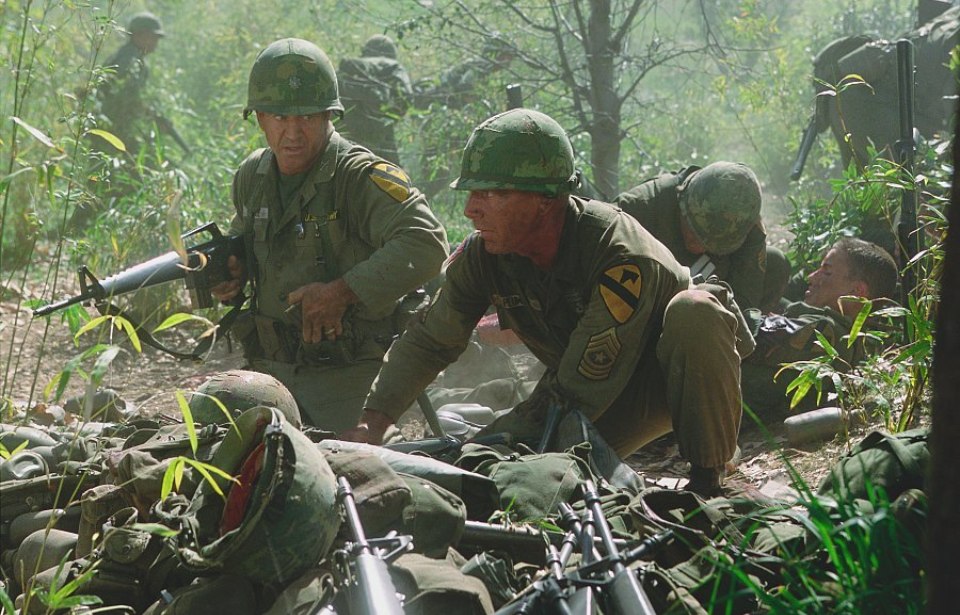We Were Soldiers (2002) is considered by many to be one of the best Vietnam War films ever made. This praise is largely due to the heavy emphasis director Randall Wallace put on ensuring what he created was as accurate to the real events of the Battle of Ia Drang as possible. However, there’s one part of We Were Soldiers that’s different from what really happened: the ending.
What is We Were Soldiers about?
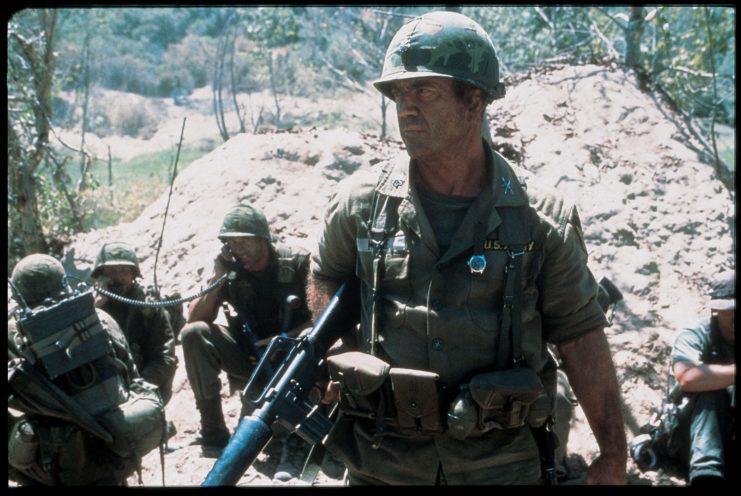
We Were Soldiers is based on the novel, We Were Soldiers Once… and Young: Ia Drang – The Battle That Changed the War in Vietnam, by renowned war correspondent Joe Galloway and Lt. Gen. Hal Moore. Both were present at the Battle of Ia Drang, the first large-scale engagement of the Vietnam War.
The film follows the experiences of both Moore, portrayed by Mel Gibson, and his wife, Julia, played by Madeleine Stowe. The former arrives in Vietnam in November 1965, and, soon after, is tasked with leading his 400 men in an effort to take out the enemy troops who attacked one of the bases in the Ia Drang Valley. Outnumbered when they arrive, the men are forced to fight for their lives while eliminating the 4,000-strong North Vietnamese force.
The secondary plot follows Julia, who volunteers to deliver telegrams informing families of their loved ones’ deaths in Vietnam.
The ending of We Were Soldiers
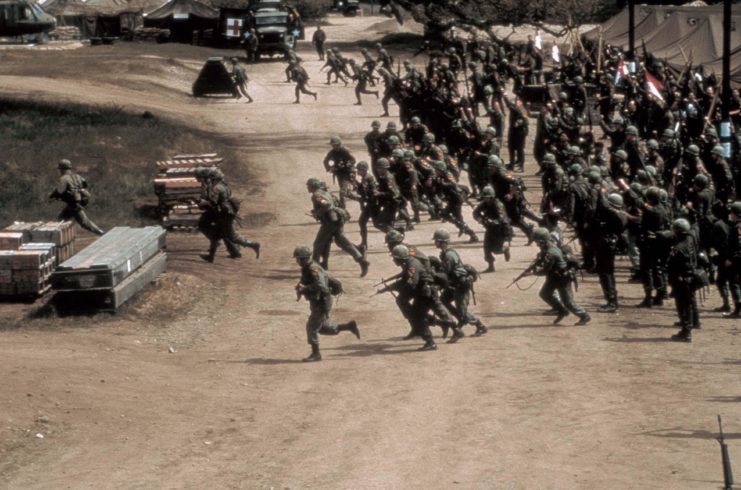
The ending of We Were Soldiers comes once Hal Moore makes the decision to call in “Broken Arrow,” a request for all available combat aircraft to attack enemy positions. They successfully hit many of the Viet Cong and North Vietnamese Army (NVA) troops, while also shooting some of the Americans with friendly fire. Nonetheless, this allows a reprieve for Moore and his men to secure the area.
The North Vietnamese attempt one final attack, but are soon overrun and ordered to evacuate the headquarters they took only a few days prior. Successful in their mission, the Americans travel back to their landing zone to be taken back to base. Moore is the last to leave, refusing to do so until every man – living and dead – has left.
Despite their efforts, the North Vietnamese retake the position soon after. Moore continues to fight, returning home to Julia after a year.
Battle of Ia Drang
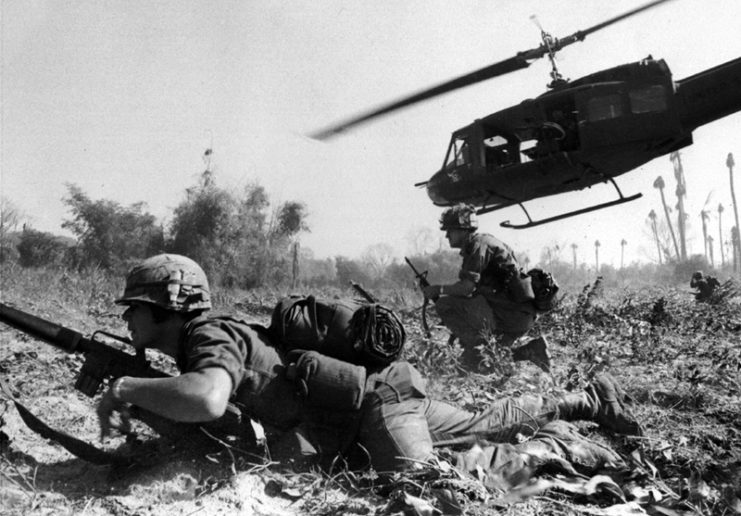
The real life Battle of Ia Drang took place between November 14-19, 1965. The bulk of the fighting was centered around two vital helicopter landing zones: LZ X-Ray and Albany. Hal Moore and the 1st Battalion, 7th Cavalry Regiment fought at the former for three days, beginning on November 14.
Where the difference between We Were Soldiers and reality lies is that the battle didn’t end with Moore and his men evacuating, nor was there a final heroic charge. It wasn’t until Albany was back in American hands that the engagement officially drew to a close.
The majority of the 2nd Battalion, 7th Cavalry Regiment, under the command of Lt. Col. Robert McDade, didn’t enter the fight until X-Ray had already been relieved by Moore. After they were airlifted out of the combat zone, McDade’s men were joined by the 2nd Battalion, 5th Cavalry Regiment.
LZ Albany
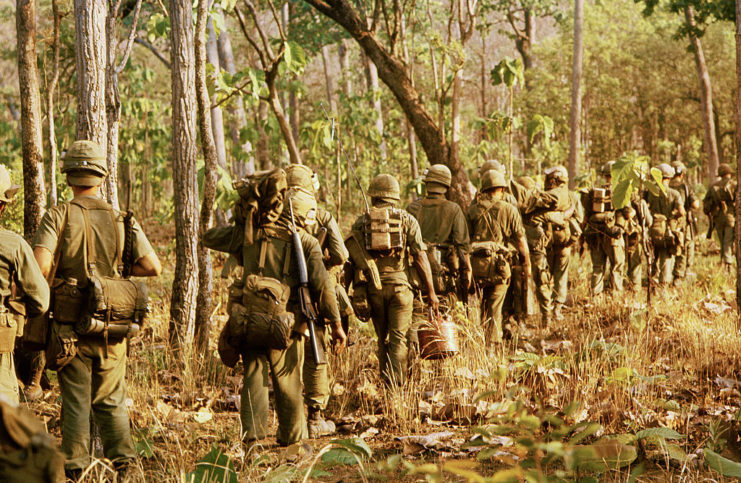
The following day, both battalions were informed of an incoming bomber run on LZ X-Ray, meaning they needed to go elsewhere. The 2nd Battalion, 5th Cavalry Regiment went toward LZ Columbus, while the 2nd Battalion, 7th Cavalry Regiment traveled to LZ Albany, capturing two NVA soldiers on the way. They were interrogated by McDade, who, along with most of the commanding officers and radio operators, were called into a meeting to discuss the intel.
The remainder of the 2nd was left waiting in a communication blackout. In addition, they were exhausted from the fight at X-Ray, so it was easy for hundreds of NVA troops to sneak up and launch an attack. Word reached the battalion traveling to Columbus, who sent Bravo Company back to Albany to serve as reinforcements. These additional troops pushed back the enemy, allowing the others to evacuate the wounded.
Conclusion of the Battle of Ia Drang
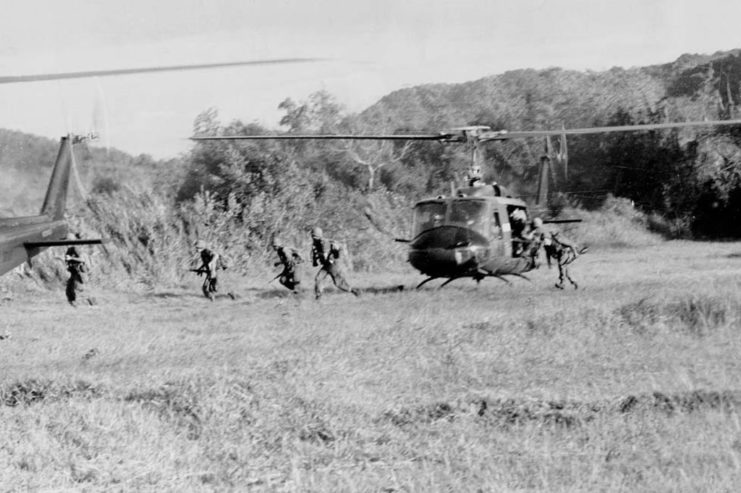
There were no further attacks overnight. On November 18, 1965, the US forces were able to gather their dead. Although the fighting had ended, the Battle of Ia Drang didn’t officially conclude until the next day, as it took two days to collect the bodies.
James Lawrence, one of the men who fought at LZ Albany, later recounted his experiences. He wanted to ensure the memories of those who died live on, in particular that of his best friend, Lt. Don Cornett.
Recalling the aftermath of the fight, he said, “Back then Stars and Stripes would carry the casualty reports and I had a red pen and started checking off the names of guys I knew who were listed as KIA. I marked off 65 names and that’s when it really hit me what had happened and it just overwhelmed me. I couldn’t grasp it.”
More from us: Val Kilmer Accidentally Landed Matthew Modine the Starring Role in ‘Full Metal Jacket’
Although it was left out of We Were Soldiers, Albany was no less bloody than X-Ray. Of the 500 men present as part of the 2nd Battalion, 7th Cavalry Regiment, 155 lost their lives, and just 84 were immediately able to return to active duty.
